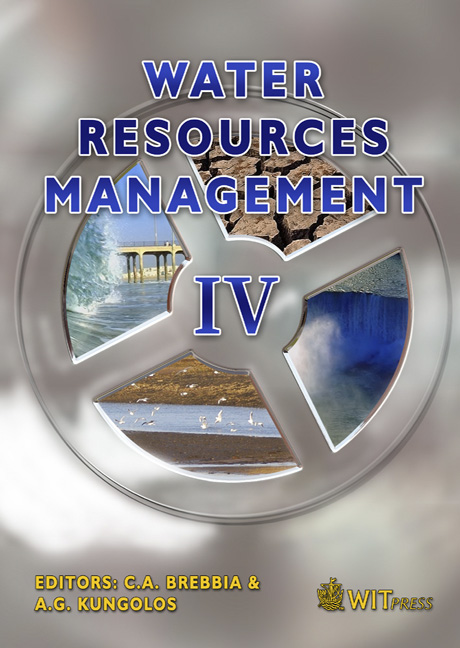The Effects Of Flow Regime And Temperature On The Wastewater Purification Efficiency Of A Pilot Hybrid Constructed Wetland
Price
Free (open access)
Transaction
Volume
103
Pages
14
Published
2007
Size
477 kb
Paper DOI
10.2495/WRM070401
Copyright
WIT Press
Author(s)
I. Zaytsev, K. Nurk, E. Põldvere, A. Noorvee & Ü. Mander
Abstract
A pilot scale experimental hybrid constructed wetland (CW) was established in 2005 for the treatment of mixed effluents from municipal sources and food processing plants in a small village in southern Estonia. The aim was to find optimal operating regimes (varying hydraulic loading rates, loading intervals, recirculation regimes and regimes of hydraulic retention time) for the use of analogous CWs in cold climates. The hybrid wetland system consists of two parallel systems designed on the same principle: a vertical subsurface flow (VSSF) filter followed by a horizontal subsurface flow (HSSF) filter. The VSSF filter of one system (the left filter) is filled with crushed limestone, while the other (right) is filled with light weight aggregates (LWA). Both HSSF filters are filled with LWA. From December 2005 until December 2006, water samples from the outlet of the septic tank and the outlet of both VSSF and HSSF filters were taken once a week. In both systems, a combination of decreasing hydraulic load (from 52 to 14 mm d-1) and increasing recirculation rate (from 34 to 300%) caused a significant increase in the purification efficiency of BOD7 (from 58 to 99%), Ntot (from 11 to 82%), and NH4-N (from -16 to 83%). In both systems, the removal efficiency of Ptot did not show any significant correlation with hydraulic load, whereas in the right (LWA) system, the increasing recirculation rate significantly increased Ptot removal. The dynamics of the COD value was analogous to that of the BOD7 value, but no significant differences were found between the removal efficiency of total suspended solids (TSS) of different flow regimes. Likewise, water temperature did not show a significant correlation between the purification efficiency of all of the studied water quality indicators. For the successful functioning of hybrid CWs in a cold climate, optimal hydraulic load should be ≤20 mm d-1 with a recirculation rate of 150-300%. Keywords: aeration, design, hybrid constructed wetland, limestone, LWA, recirculation.
Keywords
aeration, design, hybrid constructed wetland, limestone, LWA, recirculation.





